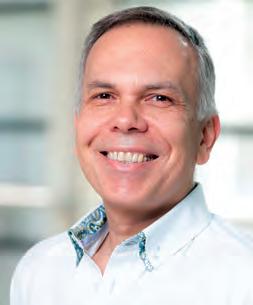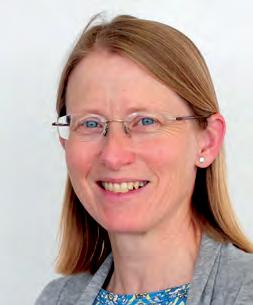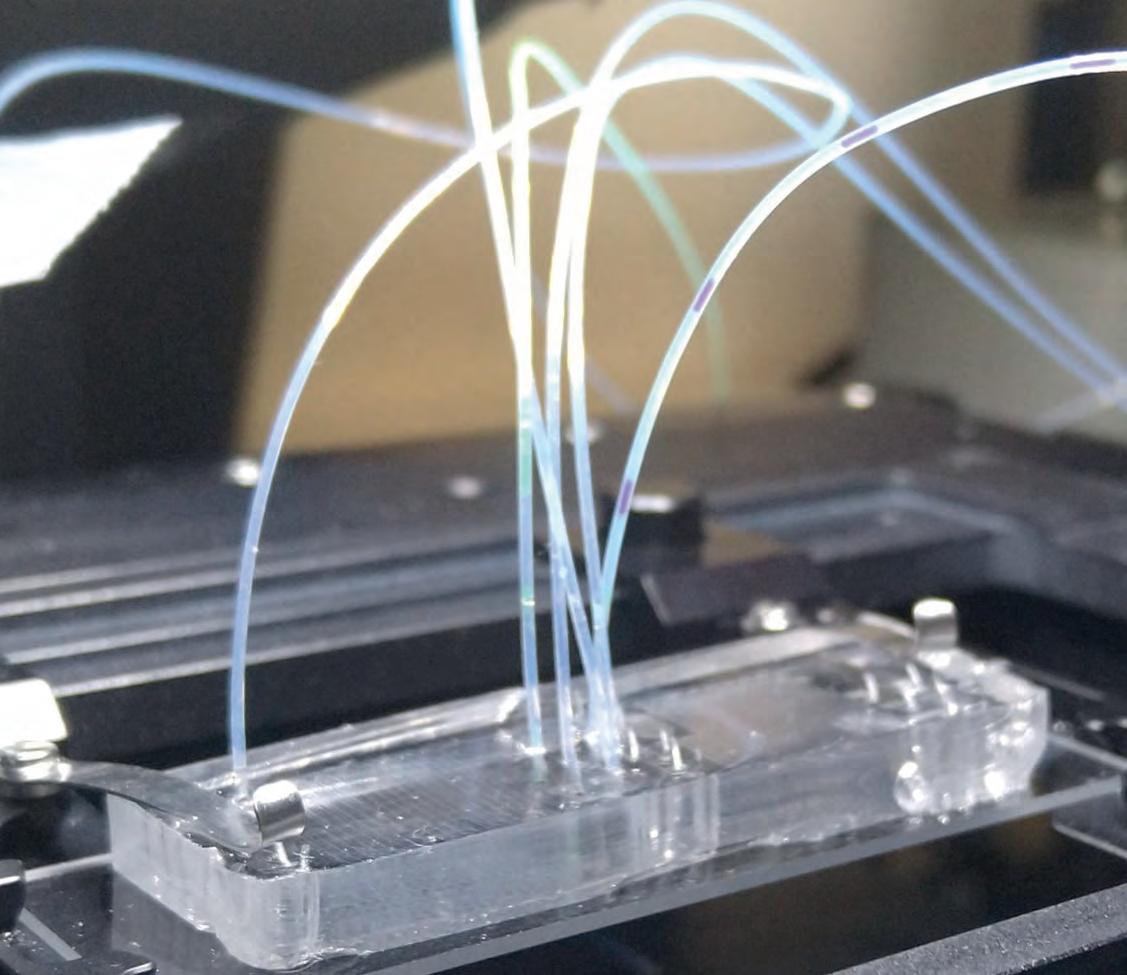
5 minute read
_________________________________________________________ It’s never too early _________________________________________________________
Dr Marcio Siqueira took up his post as Head of the Physical Sciences Technology Transfer team at Cambridge Enterprise (CE) during lockdown, while Commercialisation Director Dr Margaret Wilkinson has worked for CE and its precursor for 20 years. They both agree it’s never too early to approach CE with an idea.
IYou may have noticed that most of the activities we’ve been discussing in this issue have one thing in common: they’ve been supported at some stage in their development by Cambridge Enterprise (CE).
First, a little history: The Wolfson Cambridge Industrial Unit was founded in 1971 by the University to help foster technology transfer. It was originally located in the Department of Engineering, but gradually acquired separate o ces, new resources and di erent names, until 2006, when the University established CE as a wholly owned subsidiary.
The goal of CE is to help academics, researchers, sta and students commercialise their expertise and ideas. “We would like to be able to help the researchers ful l their potential in terms of impact,” says Siqueira. “We are here to help them, and we are prepared to do a lot of the guiding, facilitation and assistance that they need in order to do that.”
From idea to opportunity
CE can help develop an idea into a successful licence agreement or spin-out in many di erent ways. “Typically a researcher would talk to me or another team member about their technology and their commercial aspirations,” says Wilkinson. “We can help researchers evaluate the commercial potential of their idea, and work to transform their idea into a commercial opportunity that is attractive to organisations that can bring them to market. If the researchers are keen to form a spin-out and it looks appropriate, we introduce them to our seed funds team, whom we work in parallel with. We can help form the business team to take the idea forward, from nding mentors to a CEO, and we o er advice and regular follow-up.”
“Some ‘serial entrepreneurs’ are very experienced,” adds Siqueira, “so they need very little hand holding. And some are just starting out. We try to give the appropriate level of support.”
It all starts with a chat. “In the good old (pre-Covid) days when we saw people in person, you might just have a chat to start o ,” says Wilkinson. And although Covid has decreased the serendipity of bumping into people in hallways, it’s still possible to contact CE by email or through the website. “If you know somebody in CE, it’s best to talk to them rst, because they’ll know your background. But you can also email us in con dence, and Marcio will decide who in the team is best to deal with your query,” says Wilkinson.

Dr Marcio Siqueira Dr Margaret Wilkinson
CE supported Cambridge Epigenetix (Balasubramanian), which has now raised $146m to date, and Sphere Fluidics (Abell), which recently closed a £30m investment round.


Never too early
This is where they both emphasise the importance of starting early. “Talk to us rst,” says Siqueira. “Don’t talk to other people, because that counts as a disclosure and that could erode potential protection of the invention.” Wilkinson adds: “It’s never too early to come because it’s often useful to be able to give a bit of a steer on thinking about which way to go and what to develop. And we can advise you on how you can maintain protection of your technology but still get feedback. We can also signpost people on how to make the most of the Cambridge ecosystem.” That Cambridge ecosystem again – is it really that important? “The ecosystem makes our life so much easier,” says Siqueira. “There are so many people here who have done this before and who have useful ideas and pointers and want to share them. There’s so much going on – colleagues, clubs, societies, friends, small businesses, the Cambridge network, Cambridge angels (takes a breath) -- it’s probably one of the top three richest entrepreneurship ecosystems in the world.” “There’s a whole ecosystem for students as well as sta ,” adds Wilkinson. So much so that a whole website devoted to the University Enterprise Network provides ideas for students and sta on how to get involved in enterprise and innovation, including links to the numerous student societies and workshops, courses and webinars run by CE and the Cambridge Judge Business School. “It can be confusing, but if the rst thing you nd doesn’t suit you, then you’ll probably nd another ten things that suit you better,” says Wilkinson.
Be open to change
According to Wilkinson, one of the main pitfalls that researchers hit when developing a product is not talking to potential customers early enough. “Of course that has to be balanced with not giving away technical secrets,” she says. “But it’s really important to talk to potential users and to be open to changing your mind about how your tech will be used. Somebody may have a fantastic technology, but it may fall down if they haven’t talked to the people who will use it and who may have di erent needs.”
Siqueira adds: “Changing the world is hard – it takes a lot of concerted e ort, and needs di erent kinds of research that our academics aren’t necessarily used to. You must understand the market need and how you will address it. At rst people think everything’s going to happen at the drop of a hat, then reality starts to sink in. If they have something that strong, a compelling proposition, then we’ll nd a way to make it happen with them, but they must remain engaged.”
The journey from idea to ultimate product can be long, and Wilkinson says research done a few years ago revealed it often take 8 years or more from rst discussion of an idea to the rst product on the market. The team have created a page on the CE website called The journey of a University idea to help researchers understand the di cult but potentially rewarding path they have chosen. Siqueira concludes: “It can be a very long and arduous process which requires a lot of engagement from the researcher, but it’s very ful lling when things come together – you get a real buzz and sense of achievement. Come talk to us and let’s make the world better!”
CE contributed to the seed investment and ling of patents for Transition Bio (Knowles) to protect its new drug discovery engine based on droplet micro uidics and machine learning.











